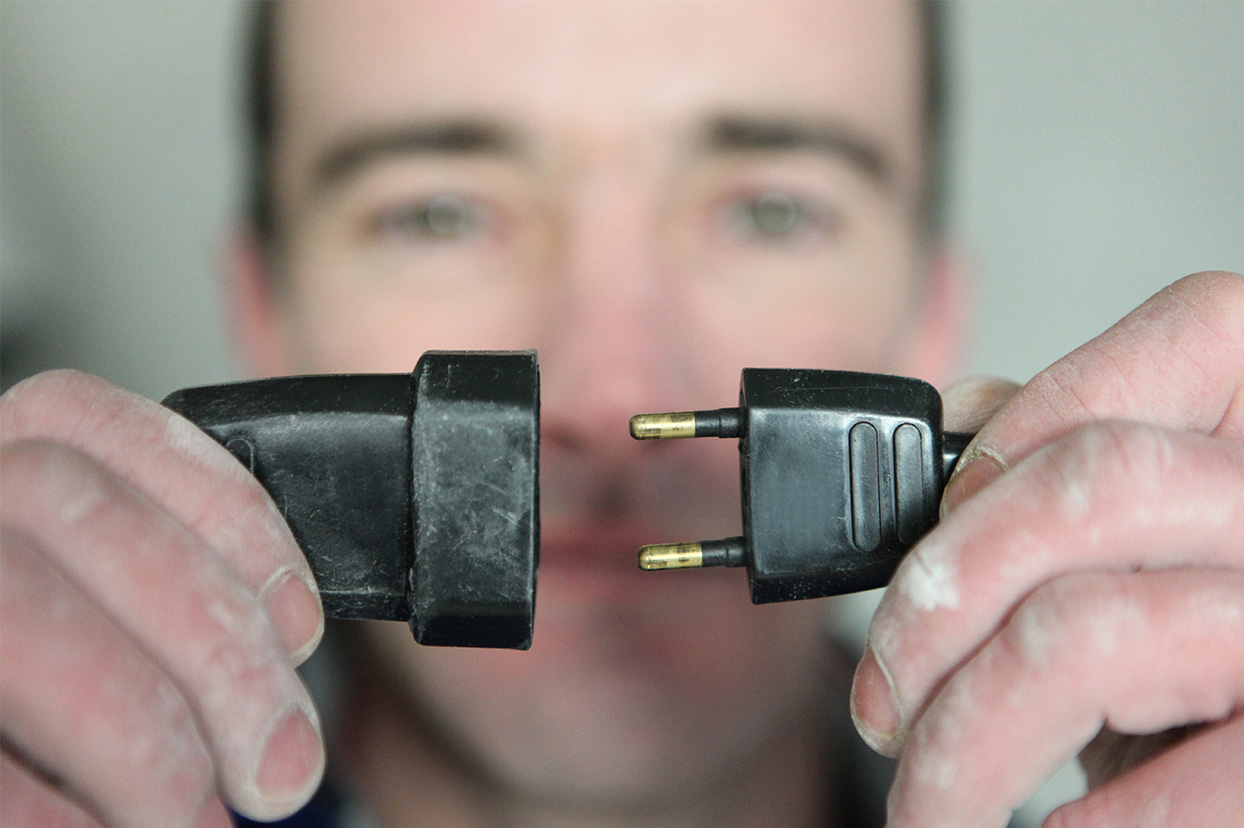May 2, 2018
Watch out for everyday electrical safety hazards
You probably don’t think too long about grabbing an extension cord or plugging something in to an outlet. It’s easy to forget that these everyday activities can pose a risk for fires, shock and even electrocution if done improperly.
Extension cord safety
Extension cords are often used incorrectly.
Here’s what you need to know to use one safely:
- Choose a round, three-wire grounded extension cord versus a two-wire or flat-wire cord.
- Choose an extension cord that’s rated for the electrical load needed and type of use, such as residential versus commercial.
- Check cords regularly for cracks, tears, exposed wires and missing ground plugs. If you find anything wrong, take the cord out of service and tag it for repair or throw it away.
- Don’t place cords under carpets or furniture and never string them through doorways, walls, windows, ceilings or floors.
- Do not fasten an extension cord to a wall.
- Buy an extension cord that is long enough for the job; don’t chain multiple cords together.
- To disconnect a cord, pull on the plug, not the cord.
- Follow the information on the cord’s warning label.
- Don’t use an extension cord for more than one appliance.
- Don’t use a multi-plug extension cord, as these don’t have a fuse built in to protect you from overloading the cord.
- Only use extension cords for temporary needs, lasting 90 days or less. For anything more, use permanent wiring, conduit and outlets to prevent fires and electric shock.
- When in doubt, ask a qualified electrician or maintenance employee to review your electrical setup.
Extension cords are often used for power tools on construction sites. For more on this, read our blog post on hand and power tool safety.
To give a quick talk to your employees on extension cord safety, see our Electrical extension cord safety 5-Minute Solution.
Ground fault circuit interrupter (GFCI) outlet safety
You’ve probably seen a GFCI outlet in your bathroom or kitchen. Many contractors use them whenever they need temporary power.
These outlets can help protect you from electrocution by quickly shutting off electricity when there’s a ground fault.
GFCI protection can come in the form of an outlet, portable outlet, cord or a circuit breaker panel with a test and reset button.
It’s important to test and reset GFCI outlets periodically to make sure they’re working properly. To do this:
- Plug a light into the outlet.
- Push the test button.
- If the light goes off, push the reset button and the light should go on again. That means it's working. If the light does not go off, have a qualified electrician repair the GFCI before using the outlet.
On a construction site, test and reset GFCIs daily before use.
Other electrical safety risks
There are a number of other electrical safety hazards you should be aware of at home and work, such as:
- Stay away from overhead electrical service lines when climbing ladders.
- Don’t use metal ladders when doing electrical work. Also, don't use them when doing work near power lines.
- Use proper lockout/tagout procedures for machinery that needs maintenance or repair.
Electricity can pose a serious hazard in any workplace. Remember to use it safely to protect yourself and your coworkers.





